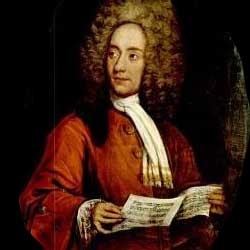Albinoni, Tomaso Biography - A Very Quick Guide
Artist:
Albinoni, Tomaso
Born:
June 14, 1671, Venice
Died:
January 17, 1751, Venice
Tomaso Albinoni (June 14, 1671, Venice, Italy – January 17, 1751, Venice) was an Italian baroque composer.
Born to a wealthy paper merchant in Venice, he studied violin and singing. Unlike most composers of his time, he did not seek a post at a church or at courts of nobles or royalty. Instead he composed music independently. Then, in 1722, Maximilian Emanuel II, the Elector of Bavaria, to whom Albinoni had dedicated a set of twelve concertos, invited him to direct the Elector's operas.
He wrote some fifty operas, but is most noted for his instrumental music, especially his oboe concertos.
His instrumental music greatly attracted the attention of Johann Sebastian Bach, who wrote at least two fugues on Albinoni's themes and constantly used his basses for harmony exercises for his pupils.
Much of Albinoni's work was lost in World War II with the destruction of the Dresden State Library. Little is known of his life and music after the mid 1720s. The famous Albinoni Adagio in G Minor is a 1945 reconstruction by Remo Giazotto of a fragment from a slow movement of a trio sonata he discovered among the ruins of the State Library.
Born to a wealthy paper merchant in Venice, he studied violin and singing. Unlike most composers of his time, he did not seek a post at a church or at courts of nobles or royalty. Instead he composed music independently. Then, in 1722, Maximilian Emanuel II, the Elector of Bavaria, to whom Albinoni had dedicated a set of twelve concertos, invited him to direct the Elector's operas.
He wrote some fifty operas, but is most noted for his instrumental music, especially his oboe concertos.
His instrumental music greatly attracted the attention of Johann Sebastian Bach, who wrote at least two fugues on Albinoni's themes and constantly used his basses for harmony exercises for his pupils.
Much of Albinoni's work was lost in World War II with the destruction of the Dresden State Library. Little is known of his life and music after the mid 1720s. The famous Albinoni Adagio in G Minor is a 1945 reconstruction by Remo Giazotto of a fragment from a slow movement of a trio sonata he discovered among the ruins of the State Library.
Top Pieces on 8notes by Albinoni, Tomaso
